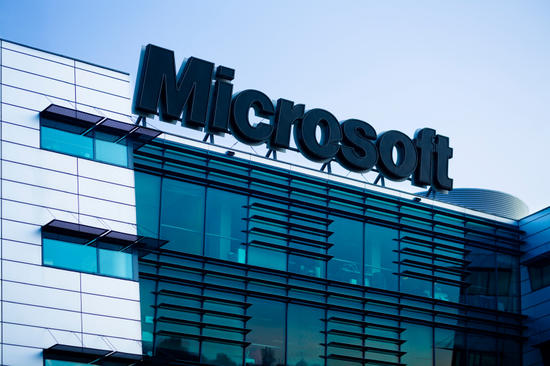In recent years, the landscape of artificial intelligence has undergone a seismic shift, particularly in the domain of generative AI. Organizations are increasingly relying on these technologies to streamline operations, enhance decision-making, and drive strategic initiatives. A notable development in this space has been Microsoft’s recent move to incorporate Anthropic’s Claude models into its widely used Microsoft 365 Copilot. This pivot offers a new dimension to the capabilities available to enterprise users, raising important questions about the competitive dynamics and relative merits of various AI tools in the market.
Microsoft’s strategic decision to incorporate Anthropic’s models into its Copilot suite signifies a burgeoning trend toward diversification and flexibility in the AI ecosystem. Historically, Microsoft has aligned itself closely with OpenAI, having invested over $13 billion and integrated their technologies across multiple platforms including Bing and Windows. However, the inclusion of Anthropic’s Claude models presents a compelling alternative, one that is particularly significant considering the accelerated demand for robust generative AI solutions across various sectors.
Understanding the specific attributes of Anthropic’s Claude models compared to OpenAI’s offerings is crucial for leaders in small and medium-sized businesses (SMBs) and automation specialists who are considering adoption of these technologies. Anthropic, founded by former OpenAI executives in 2021, commands an impressive valuation of $183 billion, underscoring investor confidence in its approach to AI. Claude models place a strong emphasis on reasoning capabilities, making them particularly well-suited for complex tasks that require deeper cognitive engagement. However, they also operate predominantly on cloud infrastructures provided by Amazon and Google, thereby raising considerations around data management, security, and costs associated with cloud services.
On the other hand, OpenAI has established a reputation for delivering cutting-edge language models that excel in a variety of creative and operational applications. This is particularly relevant for SMBs seeking to optimize content generation, customer interactions, and operational workflows. OpenAI’s models are integrated seamlessly into Microsoft’s ecosystem, including tools that many businesses depend on, which creates significant utility for users who are already engaged with Microsoft products. However, leaders should carefully evaluate the implications of a more homogenized tech stack, as relying too heavily on a single vendor may increase organizational vulnerability to market fluctuations or shifts in strategic focus.
A key area of consideration for businesses evaluating these alternatives is cost. Both Anthropic and OpenAI’s services come with varying price points that can considerably impact the overall return on investment (ROI) for an organization. SMB leaders need to conduct a thorough cost-benefit analysis that factors in not just licensing fees, but also operational overhead and potential savings achieved through automation and enhanced productivity. Both platforms offer varying pricing structures based on usage, which necessitates a clear understanding of expected workloads and output quality desired.
Scalability also represents a critical differentiator between the two options. OpenAI’s established connections within Microsoft’s extensive ecosystem may offer smoother scaling opportunities as businesses grow or pivot. In contrast, users of Anthropic may have to grapple with the transition to different cloud infrastructures and the additional complexity involved in managing multiple vendor relationships. Therefore, SMB leaders must consider how each platform aligns with long-term growth objectives and whether system flexibility is essential as organizational needs evolve.
In addition, the competitive landscape of AI is increasingly characterized by a broader array of choices beyond these two players. Platforms like Make and Zapier have emerged as formidable automation solutions, each with distinct advantages depending on the contexts in which they are deployed. Make, for example, provides an innovative approach to linking apps and automating workflows, while Zapier has gained traction for its user-friendly interface and robust library of supported applications. When evaluating such tools, it is essential to weigh the relative strengths and weaknesses, including ease of use, integration capabilities, and customer support, to select the solution that best fits the business context.
As SMB leaders are inevitably drawn into making these decisions, it is imperative that they not only consider cost and scalability, but also the broader implications of choosing one technology provider over another. The integration of diverse AI capabilities could provide a strategic advantage; however, it may also complicate operational management and technology governance. In this rapidly evolving space, understanding the nuances of each tool, its unique value propositions, and the organization’s specific needs will be instrumental in driving effective outcomes.
In conclusion, the latest move by Microsoft to incorporate Anthropic’s Claude models alongside OpenAI’s offerings reflects a significant shift in the AI landscape. This evolution prompts leaders in SMBs and automation specialists to pursue a multi-faceted approach when considering AI and automation tools. The understanding of tool comparisons—including strengths, weaknesses, costs, ROI, and scalability—will ultimately inform their strategic choices.
FlowMind AI Insight: As AI technology continues to mature, the need for a tailored approach to tool selection becomes apparent. Businesses should prioritize flexibility and strategic fit over mere cost considerations, ensuring that the tools they adopt will effectively support long-term organizational goals in an increasingly complex environment.
Original article: Read here
2025-09-24 17:39:00

